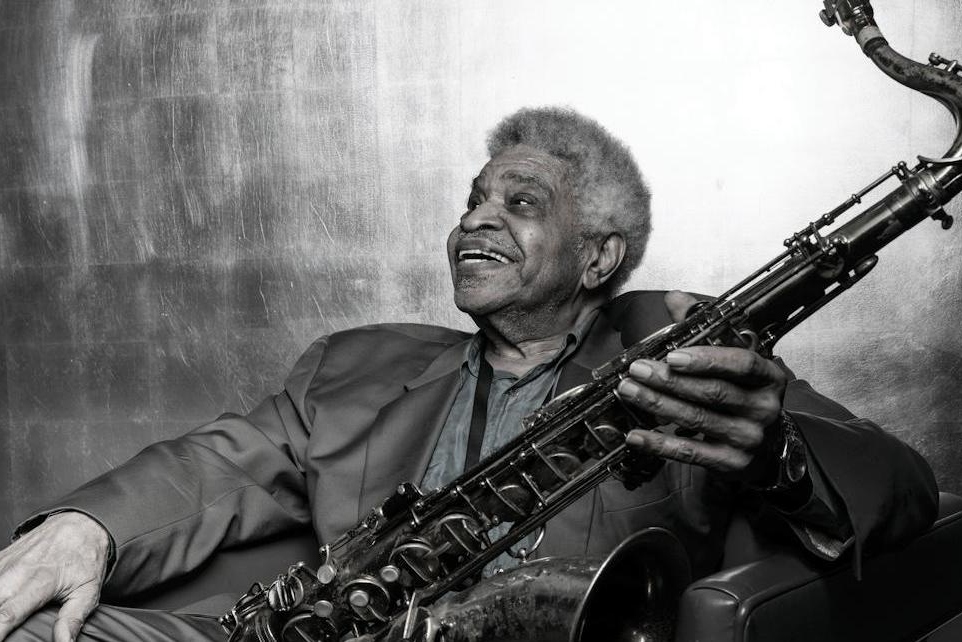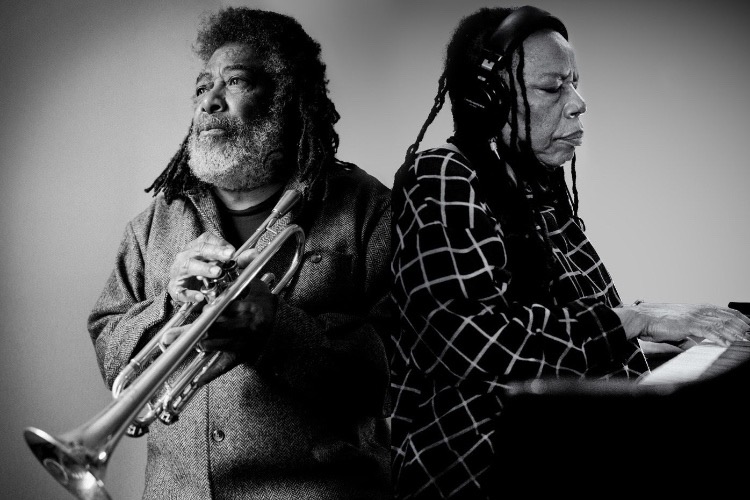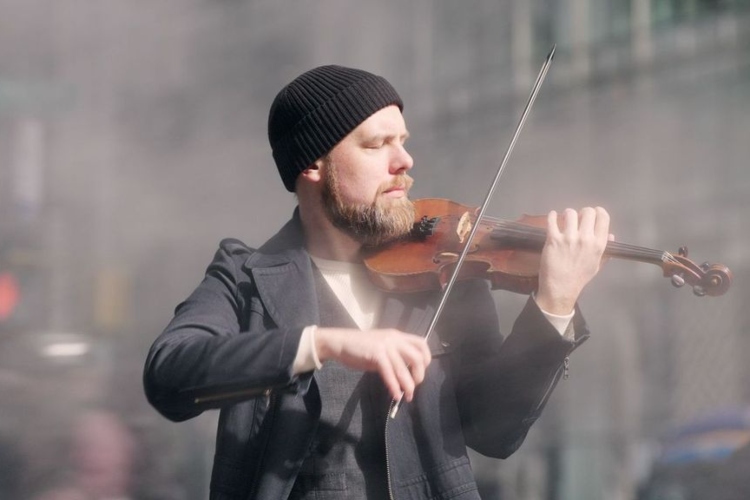Harmony on Your Side: A Conversation with George Coleman (Part One)
|
Getting your Trinity Audio player ready...
|
Unfortunately, sometimes life gets in the way of interviews making it to print. This interview with the legendary George Coleman, which took place on May 19, 2023, is one such conversation. At the time, the NEA Jazz Master was promoting his latest live recording, Live at Small’s Jazz Club (Cellar Live, 2023), an electrifying quartet recording with songs that highlight various moments throughout his career. The album is one of his finest in a long line of releases.
Coleman’s bona fides as an ambassador for jazz are beyond reproach. The saxophonist’s experiences include stints with Max Roach, Lionel Hampton, Wild Bill Davis, Charles Mingus, Chet Baker, Lee Morgan, and Elvin Jones. He was with Miles Davis during a critical transitionary time for the trumpeter’s career, wedged between the First and Second Great Quintets. Coleman was also part of the landmark ensemble on Herbie Hancock’s Maiden Voyage (Blue Note, 1965). And he boasts several excellent recordings under his own name and a long run as a gifted music educator.
But Coleman also holds a fairly traditional view of what constitutes jazz. He does not appreciate the jazz-rock fusion or avant-garde experimentalism that emerged to prominence in his years since Miles’ band. While this author disagrees with his perspective, Coleman is nevertheless an authoritative voice on the development of Black American music, in large part, because he lived it. At first glance, Coleman’s view of jazz seemingly makes him an unusual choice for coverage on a website focused on musical transgression of genre. But as emerges in our conversation, distinguishing lines are more obfuscated than they seem. Early in his career, “Big George” played with some titans of the Blues, and hues of those influences remain in his work. So does an interest in the jazz-R&B hybridized stylings of artists like Earl Bostic, Louis Jordan, and Ray Charles. Actually, Coleman freely admits he borrows from many different kinds of music in making his own. Ultimately, it seems that even with a more conservative perspective on the idiom, Coleman is a testament to the fact that jazz itself is an art form built on the blending of musical and cultural ideas and inspirations.
PostGenre: You have been making music professionally for seventy years. How do you feel your music has changed or evolved during that time?
George Coleman: Well, my music is definitely different from what it used to be, say, a few decades ago. But it’s normal for artists to adapt and change as the years pass. I’m at the twilight of my career and, at this particular time, am pretty satisfied with what I’ve achieved in my life. I also feel good about my experience teaching music to others throughout the world. I’ve had students from all over the place and am still getting them coming in. I’ve also been trying to retire from teaching, but that is pretty hard to do.
PG: Why is retiring difficult?
GC: Because so many people need to learn this music. Many have chosen me as the person to enlighten them and give them teachings in this area. I have been pretty successful in teaching what I know.
When somebody wants to get some knowledge from me, I try to give them that. It’s not about money, either. I had seriously considered teaching someplace formal to boost my income. I could have done quite well in that area. But I don’t have the patience to do that. I would have had to have maybe five or six students a day and charge them enormous amounts of money, which I didn’t want to do. Back in the day, and even now, I give free lessons to people who are incredibly gifted and want to learn but who I know don’t have the resources to pay me.
PG: You have had some pretty successful musicians as your students.
GC: Some of my students have been very successful and have gone on to become greats. One of my saxophone students progressed to the point where he’s conducting the New York Pops. Now he’s writing film scores and other things like that; Hollywood-type stuff.
David Sanborn was also one of my students. He’s a great altoist. David makes music somewhat on the commercial side. But he came to me for lessons in harmony and playing the saxophone. He mentioned how much he had improved under my tutelage in People magazine. So I’ve had success with a lot of great people.
PG: Related to Sanborn’s music, part of what makes it a little more commercial is its incorporation of ideas from R&B and pop music. Your early heroes, in addition to Charlie Parker, were Earl Bostic and Louis Jordan. Both Bostic and Jordan are particularly known for their R&B work. Do you feel their influence is still present in your own music even though you are more focused on bop?
GC: Well, you know, I have accumulated interest in all types of music through the years. There are some kinds of music I haven’t embraced, like hip-hop. But R&B, the blues, and some aspects of rock have captured my attention before. That’s how I approach music. I try not to be close-minded but instead try to expand my interest in other fields of music. I’m amazed by the techniques and some of the things that classical musicians do. Ultimately, I try to get something out of everything.
PG: Seventeen or eighteen is a fairly young age to become a professional musician.
GC: Yeah, I learned very quickly. When I got out of high school, I recorded “Woke Up This Morning” with BB [King]. I played the horn for about a year and was pretty much in a professional arena from that point forward. I was somewhat early, but I began to learn all the things I needed to know, like arranging, reading music, and all of that stuff without going to a university or college. I didn’t go to college. I just finished high school and then hung out with and learned from older musicians who did composition and arranging. I was in my teens, and these guys were late 20s or early 30s. Of course, Phineas Newborn was also in Memphis at the time. He was a phenom. He was fantastic.
I had guidance in Memphis, which allowed me to be pretty much ready when I began to go to other places like Chicago. And when I went to play with Max Roach, I was ready. You had to be ready with Max because he played everything so fast. About ninety percent of his repertoire was up-tempo and very fast. Of course, my technique improved when I was with Max. But I had been playing fast tempos in Memphis when I was just coming up. Playing fast these days is sort of a dying thing. The young players coming up don’t think about playing fast. But this is what I teach because playing fast is thinking fast and responding fast. All these things are vitally important when you’re dealing with jazz music.
PG: In terms of making music when you were young, you even composed music for Ray Charles when you were only seventeen or eighteen years old?
GC: That’s right. Well, I wasn’t really composing. I was transcribing. I wrote out of a four-horn arrangement of some of his hits like “What’d I Say?” or “I Got a Woman” or “Lonely Avenue.” That was the only time I had any association with Ray. Many people have thought I was in his band, but I wasn’t. When he came to Memphis, Ray was a guest star for a benefit concert during the holidays. It was to support the WDIA Goodwill Revue, which sent trucks around to give homeless and underprivileged people groceries.
PG: Though you did know some of the musicians who worked with Ray.
GC: Yeah, I knew one of the guys, the saxophone player Rudolph Johnson, who was with Ray for over 20 years. I also knew a few brass players in Ray’s band. Many guys played with Ray. Not quite as many as Lionel Hampton; I was in his big band for about a year. It was a great experience.
PG: A little earlier, you mentioned BB King. How did you get connected with him?
GC: BB was in Memphis during that time. He was born in Itta Bena, Mississippi, which is right across the border. But by the time I started working with him, he was in Memphis along with other blues greats like Bobby “Blue” Bland and Little Junior Parker. There were a lot of great blues musicians in Memphis in those days – the late 40s to mid-50s. I even ran into Muddy Waters and played with him. Same with Howlin’ Wolf. And many musicians, including Elvis Presley, would come to the Black neighborhood to check out BB and other blues musicians.
PG: Live at Small’s Jazz Club visits some of your experience with the blues on “Blues for Smalls.” Do you have any sense of how your experience with blues musicians – Howlin’ Wolf, Muddy Waters, BB King, Memphis Slim, Freddie King, James Cotton, and others shaped how you perform as a saxophonist?
GC: Well, my time with those musicians was very temporary. I was never really in their bands, but I was called upon, on some occasions, to play that kind of music. I was always trying to play jazz. That was what I wanted to do. But on occasion, I wound up playing blues music. And back in the day, when I was playing the so-called bebop, I was playing blues there too. And, of course, there is a very close relationship between the blues and jazz. I’m sure something from my experiences with making blues recordings can be heard in my music.
PG: And that experience also got you playing tenor sax. BB got you your first tenor, right?
GC: That’s right.
PG: Do you still have that horn?
GC: No, no, that’s long gone. I traded in back in 1955 for my Mark VI Selmer, which I have been playing for over sixty years now.
PG: Before the tenor, you played alto. Do you ever wish you had done more with the alto instead of switching to primarily focus on the tenor?
GC: Well, no, I still play the alto somewhat, but the tenor is enough for me. While I might play the alto on a special occasion, I am not for switching horns. One horn is enough for me.
PG: Of course, switching to tenor also made it possible for Miles Davis to add you to his band when he needed a new tenor. But, interestingly, the first time you ever played with Miles, you used John Coltrane’s horn.
GC: I did. Yeah. I was at Café Bohemia, down here in [Greenwich] Village on Barrow Street. It’s still there actually; I was just there recently. It closed for a long time but reopened a few years ago.
Anyway, ‘Trane was gracious enough to let me borrow his sax because I didn’t have mine with me. I wanted to play in Miles’ band, so it was important to show Miles what I could do. I kicked off a reasonably simple version of “Lover.” The song was somewhat harmonically intricate, and you had to know what you were doing to make it work. I also played it in a key where the bridge was in a very difficult key. I played it in C, and I went to E major. I played pretty well on it. I felt comfortable on it, even on Trane’s horn, which was weird for me because it wasn’t my horn. But it played well, and I managed to get through it. I certainly impressed John Coltrane because he recommended me for the gig when Miles needed a new tenor player. That was one of the reasons I got the gig.
PG: You were with Miles for a relatively short period – from 1963 to 1964. But Live at Small’s Jazz Club includes versions of “My Funny Valentine” and “Four,” so that experience still seems significant to your own music. What do you feel you learned the most from when you were with Miles?
GC: Well, playing with that band was a little more of an explorative thing for me. I had been pretty much close-centered into playing pretty straight harmony, which I still do.
But during that time, I was able to improvise spontaneously with Herbie [Hancock] because we didn’t rehearse any of that. The other harmonies we played on substitutions and all that stuff were unrehearsed. Herbie heard what I was doing, and he put harmony to it. That’s what made it so good. I was playing a few different kinds of modulations. Well, not modulations, but improvisational things that were different from the norm. But Herbie was right there to hear what I was doing. Some people have said, “Wow, you and Herbie really hooked up. He played these harmonies for you. You must have rehearsed them.” But we didn’t. Everything we did with Miles was spontaneous. Ron [Carter] and Tony [Williams] fell right in the place. They just heard what we were doing and felt it. So, one of the main things I learned from working with Miles is how to stretch out a little and do things more spontaneously and a little away from the norm.
PG: You didn’t need to be spontaneous or experiment when you were with Max Roach?
GC: Of course, I also learned that from being in Max’s band. It was just different than when I was with Miles.
I learned a lot about exploration in Max’s band, along with things about time and technique. Max had no keyboard in his band, so we had to learn how to share that role with the bass. But if you knew the chord progressions and the harmony, you could play in that atmosphere. It was not easy playing with Max because what we were doing was so up-tempo, and we were playing the chords on those tunes – “ Lover”, “Cherokee”, “Just One of Those Things” – with Max, it was all up-tempo. We had one ballad – “‘Round Midnight” – and one waltz – “Valse Hot” by Sonny Rollins. If you heard our performance at Newport, you’d know how fast our stuff was.
PG: Was that the 1958 performance? Often, when people think of that summer’s festival, Jazz on a Summer’s Day (Galaxy Attractions, 1959) or Miles’ At Newport 1958 (Columbia, 2001) comes to mind, but the live recording of you with Max’s group that year [Max Roach + 4 at Newport (Emarcy, 1958)] is equally fantastic.
GC: Yeah, 1958. That was the one. Everything, every night, people responded to what we did with Max’s group. We would have twenty or thirty choruses and a drum solo. Very technical and very rhythmic. And then we would take out the tune. People loved that was the jazz of that era, with tempos, waltzes, ballads, and everything that you wanted.
That’s what I try to bring into my modern-day performances too. I try to go through the spectrum of different harmonies and tempos. I enjoy making music that isn’t closing me into one corner, just doing one thing. I like to express myself through music in numerous ways. The audience also seems to like that broad view. I’ve noticed that when I play something different – maybe a standard they recognize, and I do something different with it to change everything around, the audience responds. And I’ve been pretty successful in doing that. Harmony and melody are very important to me. But there are many different directions you can take them.
We continue our Conversation with George Coleman here. ‘Live at Small’s Jazz Club’ is out now on Cellar Live Records. It can be purchased on Bandcamp. More information on Coleman can be found on his website.




One thought on “Harmony on Your Side: A Conversation with George Coleman (Part One)”